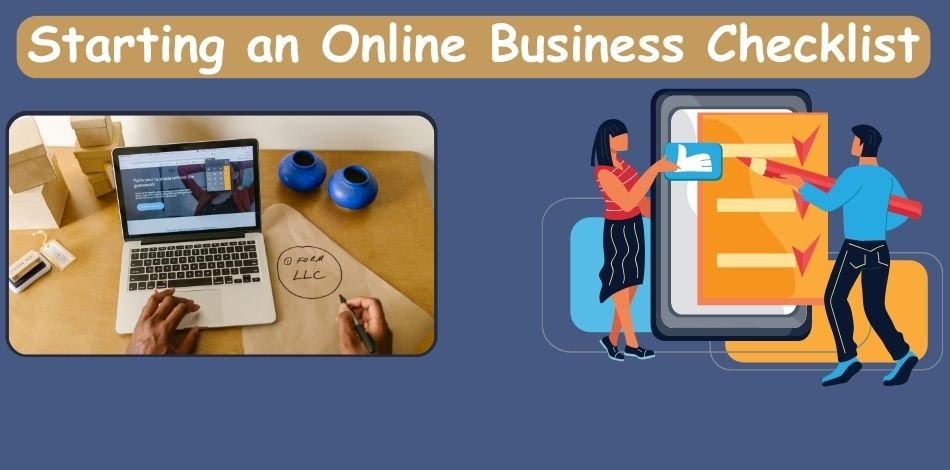Last Updated on October 30, 2025
In today’s digital-first world, launching and growing an online business is no longer a trend—it’s a necessity. As entrepreneurs flock to the internet to establish their presence, one critical question arises: where do you begin? The answer lies in understanding the first step in creating an online business strategy—defining your business’s core objective.
What Is a Core Objective?
Your core objective is the central mission or purpose behind your business. It is not just what you sell or the services you offer—it’s the why behind everything you do. It defines your reason for existing in the marketplace and becomes the backbone of your digital strategy. Without a core objective, you’re essentially trying to navigate the complex and competitive world of online business without a map.
Why This Step Comes First
Before building a website, running social media ads, or investing in SEO, you must be clear on what your business aims to achieve at its very core. Skipping this step is like constructing a house without laying the foundation—everything else risks collapsing. A clearly articulated core objective:
- Gives direction to all marketing and operational decisions.
- Helps prioritize tools, platforms, and technologies based on actual needs.
- Ensures all messaging—whether in content, emails, or social media—aligns with the purpose.
- Sets the tone for building authentic connections with your audience.
When you know what you’re working toward, every other aspect of your online business—branding, marketing, product development—starts to align more naturally and effectively.
Updated Insights for 2025
In 2025, customer expectations continue to evolve. According to recent industry surveys, 73% of consumers say they are more likely to buy from a company with a clear mission or purpose. Furthermore, digital-first consumers now expect personalized experiences, socially responsible values, and transparency from the businesses they engage with. These expectations make having a defined core objective more important than ever.
By focusing on the core objective early on, modern businesses can position themselves as trustworthy, relevant, and adaptable in a fast-changing online landscape.
Common Mistakes Businesses Make
- Starting with tools instead of purpose – Choosing platforms or ad strategies without knowing why.
- Having vague or generic missions – “We want to be the best” isn’t specific enough to drive real strategy.
- Confusing tactics with strategy – Running promotions is not a strategy unless it connects to a broader goal.
- Ignoring audience needs – A core objective must align with a genuine market demand, not just internal ambition.
Understanding the Importance of the Core Objective in Online Business Strategy
Once you realize that the first step in creating an online business strategy is defining your core objective, it’s time to explore why this step is so powerful. Your business’s core objective is more than just a mission statement—it’s the heartbeat of your brand, the foundation for every strategic decision, and the key to long-term success in the digital age.
1. Direction and Decision-Making
Your core objective acts as a strategic compass, guiding every action you take. When you’re overwhelmed with choices—like which marketing channel to focus on, which audience segment to target, or which product to launch—having a clearly defined objective eliminates guesswork. It ensures your daily decisions contribute toward the bigger picture.
👉 Example: A digital education startup with a core objective to “make coding education accessible to underrepresented youth” will prioritize outreach and affordability over premium pricing models.
2. Efficient Resource Allocation
Time, money, energy—every resource is limited, especially in the early stages of a business. A solid core objective ensures you invest wisely and avoid spreading yourself too thin. It helps answer questions like:
- Should I invest in SEO or paid ads first?
- Is it worth launching on multiple platforms or focusing on one?
When you know what your business stands for, it becomes easier to say “no” to shiny distractions.
3. Employee Alignment and Motivation
In growing businesses or remote teams, alignment is everything. A strong core objective provides employees and collaborators with a clear understanding of the mission. It fosters a sense of belonging, direction, and purpose—key ingredients for motivation and productivity.
📊 2025 Insight: According to LinkedIn’s Future of Work Report, businesses that clearly communicate their mission see 29% higher employee retention and 2.3x more engagement from remote workers.
4. Stakeholder Trust and Communication
Your core objective is also a key message for your investors, partners, and stakeholders. It shows that you’re not just guessing your way forward—you have a vision. This increases credibility, builds trust, and makes it easier to secure partnerships, funding, or even media exposure.
5. Effective Branding and Marketing
Your objective directly informs your brand message. It impacts how you position yourself in the market, how you speak to your audience, and how you differentiate yourself from competitors.
🔥 Tip: Use your objective to craft emotionally resonant messages. In 2025, storytelling-driven marketing continues to dominate—especially when it’s rooted in a business’s core mission.
6. Adaptability and Resilience
A defined objective doesn’t mean rigidity. On the contrary, it allows businesses to adapt more effectively. When you face challenges—like economic downturns, platform algorithm changes, or evolving customer needs—you can pivot your tactics while staying grounded in your purpose.
7. Performance and Progress Tracking
Your objective gives you a clear benchmark to evaluate success. Whether you’re reviewing KPIs or planning future milestones, having a core purpose allows you to measure progress in a meaningful way.
📈 Modern Metrics: In 2025, beyond just revenue, businesses are tracking brand engagement, social impact, and customer satisfaction—areas that tie directly into core objectives.
The Role of the Core Objective in Shaping Your Online Business Strategy
After defining your core objective, the next step is activating it. Remember, the first step in creating an online business strategy doesn’t end at simply writing down a mission—it must shape everything that follows. Your core objective should become the foundation that influences every strategic choice you make in your digital journey.
Let’s explore how your objective integrates into various aspects of your online business.
1. Guided Decision Making
Running an online business involves thousands of small and big decisions—from choosing your eCommerce platform to selecting which social media channel to prioritize. Without a guiding principle, these decisions become reactive or random.
✅ With a core objective: You gain a decision-making filter.
Example: If your objective is to “make eco-friendly travel gear accessible to budget-conscious backpackers,” you’ll focus on value-based pricing, sustainable materials, and likely promote via travel-focused YouTube channels instead of luxury lifestyle blogs.
Every action, from partnerships to pricing, gets filtered through this lens.
2. Strategic Marketing and Messaging
Your marketing should never feel disconnected from your purpose. In fact, today’s customers are more likely to engage with brands that stand for something meaningful.
📊 2025 Trend: Purpose-driven marketing is outperforming generic promotional content across platforms. Consumers are gravitating toward brands that align with their values.
✅ A clear objective lets you:
- Craft compelling, values-driven messaging.
- Select content topics that reflect your mission.
- Choose the right voice and tone for your audience.
Example: If your objective is about mental health awareness, your content will be empathetic, educational, and community-focused—rather than sales-heavy or flashy.
3. Smarter Resource Allocation
Online business is competitive. Budgets are tight, especially for solopreneurs and startups. When you’re clear on your objective, you avoid wasting time and money on things that don’t serve your mission.
🎯 You’ll know:
- Which platforms align with your target audience.
- Whether to invest in paid ads, SEO, influencer marketing, or community engagement.
- Which tools or software to prioritize.
Case Example: A business focused on digital literacy for seniors might avoid TikTok, even if it’s trending, and instead invest in email marketing or simplified video tutorials.
4. Hiring and Team Alignment
As your business grows, you’ll likely hire freelancers, employees, or even bring on co-founders. A well-articulated objective becomes your cultural backbone.
✅ With it:
- You hire people who align with your mission.
- You reduce miscommunication and misalignment.
- You inspire your team by providing a sense of purpose beyond paychecks.
📌 2025 Insight: Gen Z and Millennial workers prioritize working with purpose more than any previous generation. Having a visible mission is no longer a “nice to have”—it’s a competitive hiring advantage.
5. Investor and Stakeholder Relations
Your objective tells investors and partners what you’re all about. It showcases your commitment, vision, and long-term direction—key elements that appeal to modern-day stakeholders.
✅ Make your objective part of your pitch decks, funding applications, and brand story.
🔍 Example: If your objective is “to revolutionize online learning for neurodivergent students,” you instantly set yourself apart from generic ed-tech startups.
6. Building Community and Customer Loyalty
Customers want to feel part of something bigger. A shared mission creates brand loyalty, community, and even advocacy.
🤝 Brands with strong objectives:
- Turn buyers into loyal fans.
- Attract repeat customers.
- Inspire word-of-mouth marketing.
📣 Example: A pet food brand that supports local shelters through every purchase naturally attracts like-minded pet lovers and builds emotional loyalty.
Adapting and Evolving – Keeping Your Core Objective Aligned with a Changing Digital Landscape
By now, it’s clear that the first step in creating an online business strategy is defining your core objective. But here’s an often-overlooked truth: that objective is not static. In the fast-evolving world of online business, even the strongest foundations must be revisited and adjusted.
While your core objective should remain rooted in your values and mission, the digital marketplace changes rapidly. What worked two years ago may be outdated today. New technologies, shifting consumer expectations, economic factors, and even global events can all influence the way your business should operate.
1. Why Reevaluating Your Objective Matters
Many businesses fail not because of bad ideas, but because they stick rigidly to their initial plans in a world that never stops changing. Reevaluating your core objective ensures your business stays relevant, competitive, and forward-thinking.
📉 Risks of staying stagnant:
- Losing connection with evolving customer needs.
- Falling behind competitors who adapt faster.
- Missing emerging market opportunities.
📈 Benefits of periodic reassessment:
- Staying aligned with current trends.
- Unlocking new growth channels.
- Strengthening your brand’s ability to innovate and lead.
2. When to Reassess Your Core Objective
While your purpose may remain consistent, the expression of that purpose might need tweaking. Here are key moments when reassessment is crucial:
- After major business growth or expansion
- When launching a new product line or entering new markets
- In response to disruptive trends or customer behavior shifts
- When you receive repeated customer feedback suggesting a change
- During annual strategic planning sessions
🔄 Make it a habit to review your objective at least once a year.
3. How to Adapt Without Losing Identity
Change doesn’t mean abandoning your mission. It means refining how you pursue it. Let’s say your original objective was:
🟢 “To help small business owners build professional websites easily.”
But now, with AI and no-code tools exploding in popularity, you might evolve it to:
🟢 “To empower small business owners to create smart, AI-driven online presences without technical skills.”
Notice how the core mission is preserved, but the delivery method evolves.
✅ Ask yourself:
- Does our current objective reflect today’s audience and technology?
- Have our customers’ pain points changed?
- Are we solving the right problem in the most efficient way?
4. Listening to the Market
One of the best sources for evolution is your audience. Feedback, behavior analytics, customer support tickets, and engagement trends offer rich insights.
📊 2025 Tool Tip: Use tools like Hotjar, Google Analytics 4, and Typeform to gather behavioral data and direct feedback. They can reveal gaps between your intent and your impact.
5. Balancing Stability and Flexibility
A successful online business strikes a balance between holding strong to values and pivoting with strategy. Your values might stay consistent, but the goals and channels you use to pursue them can and should change over time.
🚦Think of your business like a GPS system:
- Your destination (core objective) may stay the same.
- But your route (strategy) can change based on traffic (market shifts), road closures (regulatory changes), or shortcuts (new technology).
Final Thoughts: Putting It All Together
If you’re building a new business or pivoting an existing one, never underestimate the power of starting with clarity. The first step in creating an online business strategy isn’t about which tools to use or which platform to launch on. It’s about understanding your “why”—your core objective.
This single decision influences:
- Your marketing voice and visual identity.
- Your hiring choices and culture.
- Your tech stack and operations.
- Your customer experience.
- And most importantly, your long-term growth potential.
In the end, tactics will change. Platforms will evolve. Algorithms will update. But a clear, authentic, and adaptable core objective will remain your greatest strategic asset in an ever-changing digital world.



